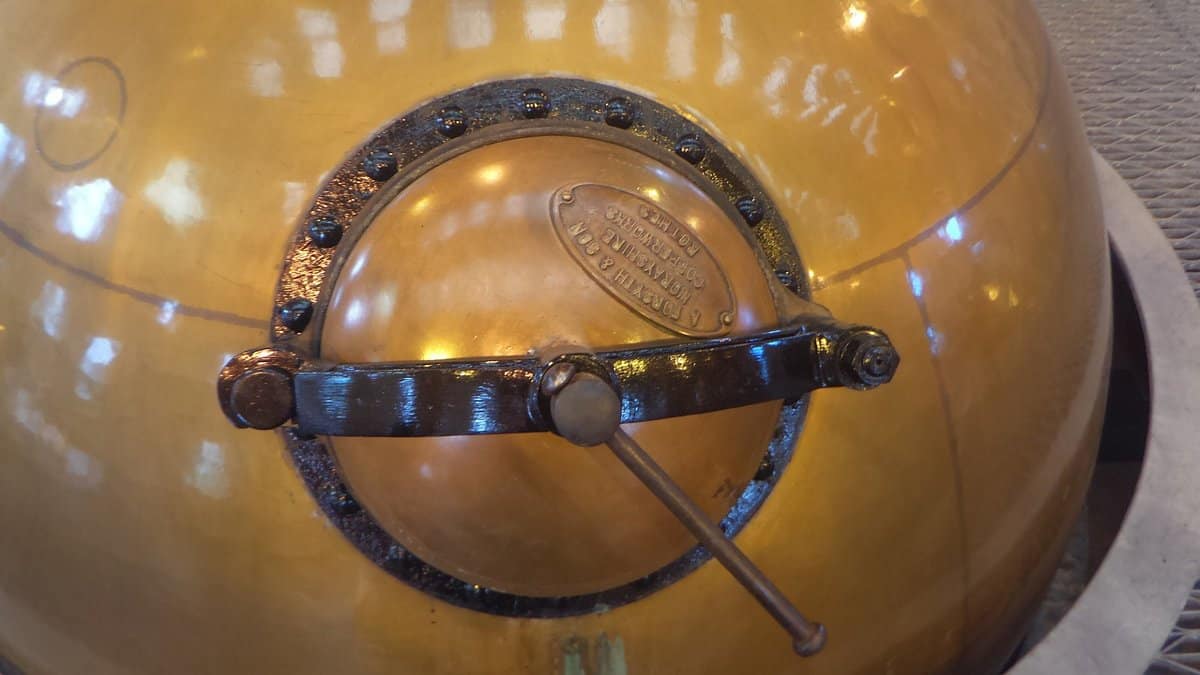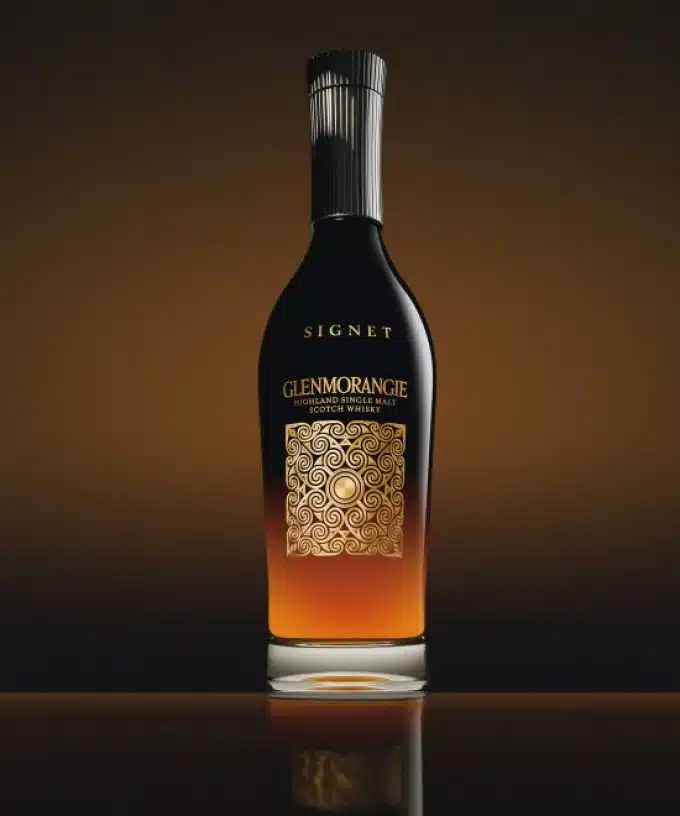OPENING TIMES
January – December
OPENING TIMES
| Day | Times | |
|---|---|---|
| Monday | 10:00 | 17:00 |
| Tuesday | 10:00 | 17:00 |
| Wednesday | 10:00 | 17:00 |
| Thursday | 10:00 | 17:00 |
| Friday | 10:00 | 17:00 |
| Saturday | 10:00 | 16:00 (June-Sept) |
| Sunday | 12:00 | 15:00 (June- Sept) |

Glenmorangie is believed to derive from either the Gaelic Gleann Mòr na Sìth which means “vale of tranquillity” or Gleann Mór-innse meaning “vale of big meadows”. Drawing its water from the Tarlogie Spring the distillery was built in 1843 on top of an old brewery. Owned by Louis Vuitton Moët Hennessy the distillery produces about 6 million litres of spirit each year from its 6 wash stills and 6 spirits stills.
The process at Glenmorangie starts with mashing unpeated barley with water from the distillery’s Tarlogie Springs – making this one of a small number of hard water sites in Scotland. Although there is no smoke, once a year some chocolate malt is added to the mash for use in the firm’s Signet brand – another of the distillery’s many innovations.
Fermentation is long, while distillation takes place in the tallest stills in Scotland, all of which retain the same long-necked design of the pair which were brought from John Taylor’s gin distillery in 1887. This extra height allows a long interaction to take place between alcohol vapour and copper and, while the new make is decidedly high-toned (the cut points here are quite high), there is still a little note of cereal, adding a dry counterpoint.
The vast majority of Glenmorangie’s make is aged in ex-American oak casks, many of which have been made to the distillery’s exacting specifications: slow-growth American white oak from north-facing slopes in Missouri, which is then air-dried. The firm’s Astar bottling uses 100% of these ‘bespoke’ casks.
The casks are only used twice, with the second-fill casks all ageing in damp ‘dunnage’ warehouses to increase oxidative-driven flavours. As the whisky matures, it picks up more lush fruits, some honey and mint, as well as notes of vanilla, crème brûlee and, in the oldest expressions, chocolate.
Some of the mature spirit is then transferred to ex-fortified wine (Port, Sherry) and still wine (Sauternes, Burgundy, Super-Tuscan etc) casks for a period of finishing. Glenmorangie was one of the pioneers of this technique.


The Glenmorangie Company Parent Company: LVMH Moët Hennessy Louis Vuitton

Operational
Scotland

Highlands

Single Malt
Blended Malt Whisky (Westport)

1843

600.000 Liters
Situated next to the Dornoch Firth in a series of handsome red sandstone buildings, the Glenmorangie distillery started life as the local brewery for the town of Tain. In 1843, William Matheson converted it to a distillery and it remained in the family until 1887, when it was sold to the Glenmorangie Distillery Co, co-owned by the Maitland brothers and Duncan Cameron.
After the First World War, the business was sold to a partnership between two blending and broking firms, Macdonald & Muir and Durham & Co, soon passing entirely to the former, which used the whisky for blends such as Highland Queen. Although it was bottled in small quantities from the 1920s, a change of strategy in 1959 saw Glenmorangie revived as a single malt that soon became Scotland’s biggest seller.
This was not the first time that this had happened, however. Records show that at the end of the 19th century Glenmorangie was being sold at The Savoy and other top-end London hotels, as well as being exported.
Early success in the infant single malt category resulted in two more stills being added to the original pair in 1976, a number which was doubled again in 1990. In 2009, four more were added, along with a larger mash tun and extra washbacks.
Five years previously, French luxury goods firm Louis Vuitton Moët Hennessy (LVMH) had bought the firm (also including Ardbeg) for £300m. More recently, extra warehousing has been built, the result of a decision to mature and vat all the production on-site.
In January 2018, it was announced that a new stillhouse would be built, housing two more of Glenmorangie’s distinctive, long-necked stills, plus a new mash tun and washbacks. The new facility will enable more experimental runs, with indications that innovations such as the use of stainless steel condensers will be explored.





6 with 7.400 liters of low wine added to the spirit still. the spirit still has a capacity of 8.200 liters.
The shape of the spirit still are very tall necks with boil pots.

6 wash still with a capacity of 13.000 liters amount of wash added to the still 12.300 liters capacity.
The shape of the wash still are very tall necks with boil pots


16 washbacks with a capacity of 48.500 liters each
Type of wash back used:
Stainless steel

69% ABV
Filling strength will be 63.5% ABV
100% single malt production



Various
Medium bodied
Medium in citrus, floral, vanilla, and fruity notes
Medium/ High in sweetness and spices


The giraffe has long been a beloved symbol of the Highland Distillery. The same height as a giraffe, its stills allow more space for taste and aroma, which is why Glenmorangie’s spirit is so wonderfully delicate and fruity. But the giraffe faces serious threats in the wild, from poaching to habitat loss. Numbers have fallen by almost 30% in just 30 years – and some types are now critically endangered. To play its part in helping the giraffe, in 2020 Glenmorangie forged a pioneering conservation partnership with the Giraffe Conservation Foundation (GCF) and the Royal Zoological Society of Scotland (RZSS).
At this point Glenmorangie core range is:

All the bottles released by Glenmorangie sorted by year.
Started from the beginning until present.
Check it out by clicking below

Located on the same site as the original Highland distillery, The Lighthouse is a 20-metre-high glass still house, designed for innovation and experimentation rather than yield.
The still house is home to two custom-made stills, built to the same specs as the brand’s original ‘giraffe-high’ stills. However, the new stills have certain additional features that can be used to alter the spirits character by making the stills behave as if they are taller or shorter than they are.
Adjacent to the still house is the brew house, which has also been built in keeping with the main distillery. Here, Glenmorangie will experiment with mashing and brewing. The brew house will include a custom-designed mash tun that will be able to make different clarities of wort.
Meanwhile, above the still house sits a sensory laboratory that overlooks the Dornoch Firth. It will give the brand’s director of whisky creation, Dr Bill Lumsden, and his team space to assess their experiments after each six-hour spirit run. The sensory lab also includes a tasting room and a terrace.
To ensure The Lighthouse ties in with Glenmorangie’s sustainable goals, it will be partially powered by biogas, which will be generated in Glenmorangie’s anaerobic digestion plant.


Get to know our creamy, complex single malt as you trace the journey of our signature whisky, The Original, through our distillery. Scent the fruity aromas that emerge in our lighter spirit and see the bourbon casks where our whisky mellows for 10 years. Finish your whisky distillery tour with a two-dram tasting from the Core Expressions range.DURATION:
DRAMS
COST
June – August
Monday – Sunday, every 30 minutes, 10am – 4pm
April – May & September – October
Monday – Friday, every hour, 10am – 3pm
January – March & November – December
Monday – Friday, 10am & 2pm

| Day | Times | |
|---|---|---|
| Monday | 10:00 | 17:00 |
| Tuesday | 10:00 | 17:00 |
| Wednesday | 10:00 | 17:00 |
| Thursday | 10:00 | 17:00 |
| Friday | 10:00 | 17:00 |
| Saturday | 10:00 | 16:00 (June-Sept) |
| Sunday | 12:00 | 15:00 (June- Sept) |
No account yet?
Create an AccountDo you enjoy drinking whisky and would you like to learn about this while drinking whisky and be around good company?
Join our Living By The Dram Club! Lots of knowledge, fun and benefits. Read more here
You must be 18 years of age or older to view page. Please verify your age to enter.
Your access is restricted because of your age.
